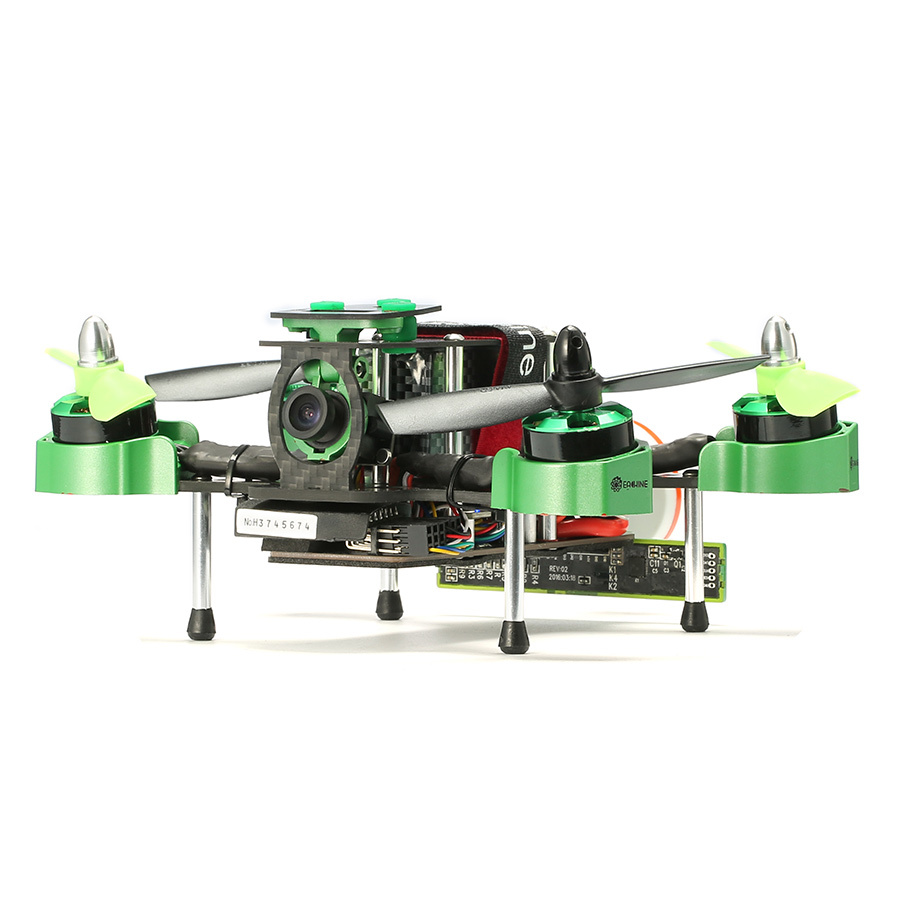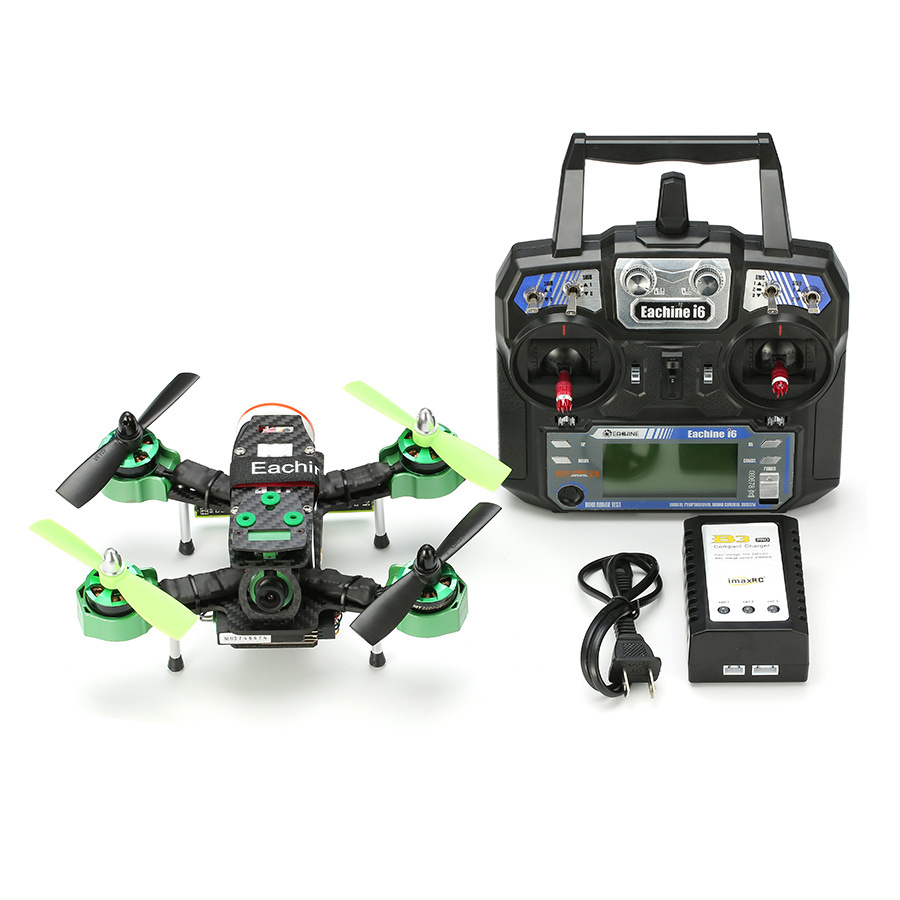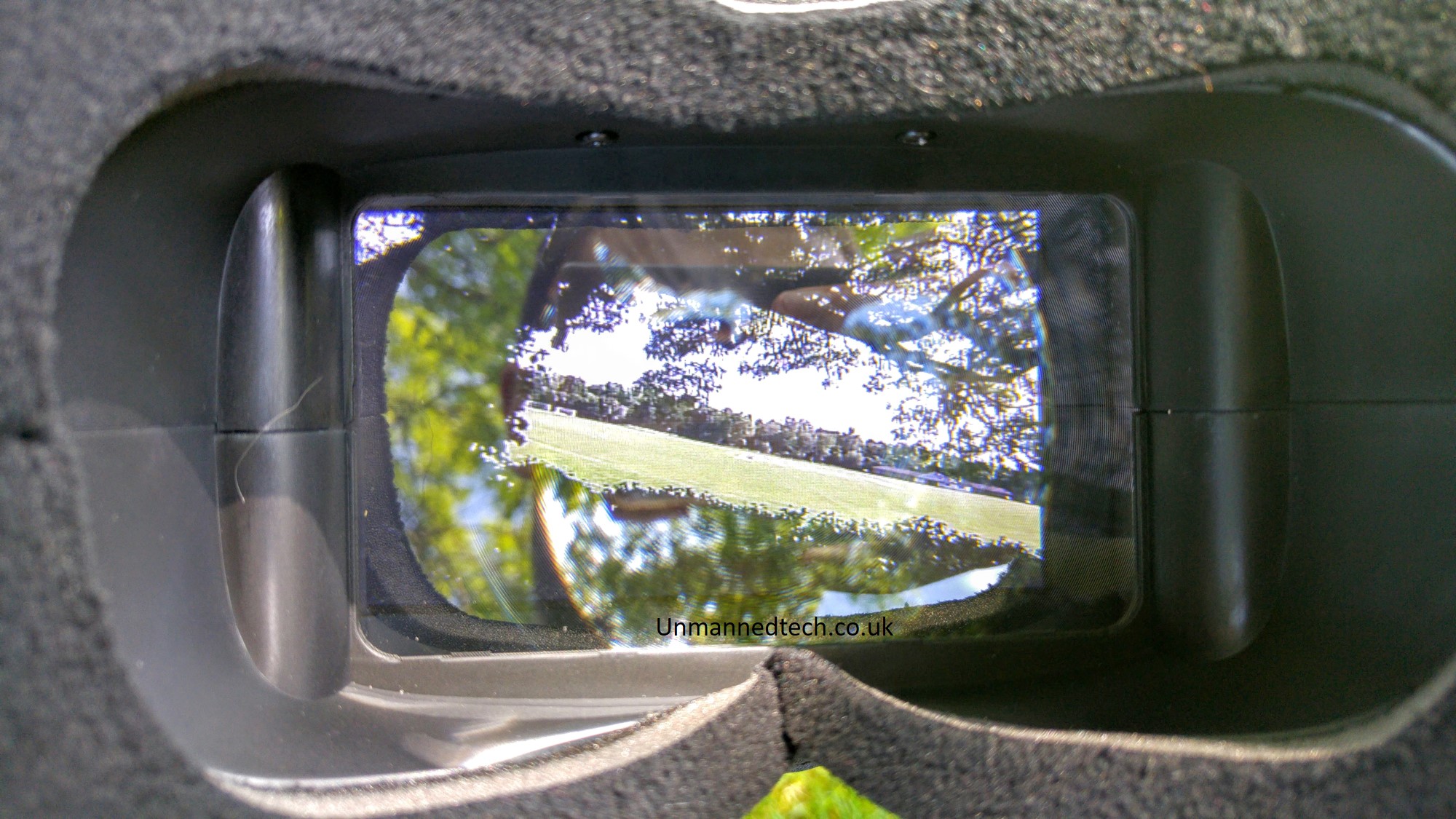The Eachine Falcon 250 FPV Quadcopter we started selling a few months ago has proven to be a great entry level FPV racing drone that is ready to fly out the box. Now, Eachine have released the new Falcon 180 FPV Quadcopter but is it any good? This short article strives to answer this question as concisely as possible.

Summary
The Falcon 180 is great for beginners as it includes everything necessary to get flying and the parts aren’t half bad either. It arrives fully assembled and configured (hence ready-to-fly) and it even includes an extra set of 4×45 propellers. Additionally, the decent motors and intuitive features also make this frame suitable for more advanced pilots with features such as an adjustable FPV camera mount. The Falcon 180 also happens to be one of the cheaper ready-to-fly racing quadcopters available. Apart from a few minor issues, we are fairly impressed with the Falcon 180 given the price and what you get for that price.

The Good
- Lots of kit for the price
- Includes Naze32 or SP F3 Flight controller
- Fully assembled out of the box
- Strong single piece carbon fiber frame
- Adjustable FPV camera
- Compatible with 3-4S lipos (3S included)
- Included cloverleaf antenna
- Angled motors (to fly faster)
- Rear LED bar (with different patterns pre-programmed in)
The Bad

- Landing legs can bend easily on hard crashes
- LED bar is also fragile and can bend on a crash
- Video transmitter antenna blocks view of some LED’s
- Uses a PWM receiver – its 2016, why no CPPM?
- It flies out of the box but requires some minor tweaks to get the best out of the Falcon 180.
Why are we selling it?
At the end of the day, the Falcon 180 is a great ready-to-fly 180 size quadcopter; it arrives fully assembled and for the price, it is very hard to beat. Read more for full details.

Lots of bang for your buck

The Falcon 180 comes with a Naze 32 or SP F3 flight controller which runs CleanFlight or BetaFlight which is great. Furthermore, the flight controller has been mounted sideways to allow you to access the USB port! This is a simple but sorely needed upgrade from the Falcon 250. The frame itself is made from a single 4mm carbon fiber plate which makes for a nice and strong frame. Other features which make it great for FPV racing is the 10 degree inclined motor mount along with the adjustable FPV camera mount
The motors are 2204 2300Kv motors that are fairly standard for FPV quadcopters, and with the 4×45 propellers, they are able to produce about 440g of thrust each which is very decent for an entry level FPV quadcopter. The 20A ESC are compatible with up to 4 cell lipos which is great as you can add a 4 cell lipo to your Falcon 180 to get some extra power from the motors! Some websites claim that this quad is capable of over 150Km/h, but with the stock setup I was only able to get to about 80Km/h (40 mph). Maybe with a 4S battey with a strong tail wind? But then again I am not exactly the best pilot around.

The 700TVL FPV camera produces a decent quality picture despite it being a CMOS sensor. The fact that the FPV camera is located on a vibration damped mount prevents the rolling shutter effect common with CMOS sensors. Coupled with the built-in video transmitter and cloverleaf antenna, I was able to get a very reliable video signal at the field I fly in. The vibration mount also doubles as a mount for your Runcam 2 or similar to record onboard video in HD.
Truly ready to fly out of the box?
I was able to take the Falcon out of the box, attach the props, connect the battery and fly and so yes, it is technically ready to fly out of the box. However, there are a few things that you should adjust to get the best out of your Falcon 180 which is detailed in the Falcon 180 getting started guide.
The Falcon 180 arrives with only 1 flight mode configured; angle mode. When flying in this mode, the quadcopter will keep itself level but still allow you to bank up to 50 degrees. This is the best mode for beginners and so it is understandable why this is the stock mode but since you have a 6 channel radio, it would have been nice to see a few other modes such as Acro and possibly heading free modes set up too. However, this is not a major issue at the end of the day as you can simply plug it into CleanFlight and set your own flight modes… kind of.

By default the aux channels have been assigned to the knobs, rather than the switches, which makes it impossible to change flight modes while you are flying (unless you have a third hand!). Changing this is relatively quick and easy on the radio but it’s still slightly annoying that you need to do this. I will provide some more details on how to do this in a separate quick start guide.
LED Bar

The LED bar is a nice addition which is particularly useful if you are flying with others as it makes your quadcopter easily visible from behind. It also has a nice touch that it flashes the side LEDs when you are turning and changes colour depending on your pitch stick position. As I mentioned before, it’s slightly annoying that the cloverleaf antenna blocks your view of a bunch of the LEDs.
How does it compare to the Facon 250?
The Falcon 250 is a great beginners FPV quadcopter and at a very reasonable price. Overall, you get a decent entry level radio and a decent FPV camera and transmitter for a decent price. Pretty decent then… (maybe I need to acquire a dictionary…). It does have some minor annoyances however, such as the fact that the USB port is not accessible without removing the top plate. The Falcon 250 also uses the CC3D flight controller and, although it works well, I tend to prefer to use a CleanFlight controller (you can always load CleanFlight onto the CC3D board).
Works well with the VR-007
The only thing missing for the falcon 180 to make this a full FPV racing drone is something to view the realtime video on. Our suggested addon is the VR-007 FPV headset which is a cheap set of FPV goggles that work great with the falcon drones.

Comparing with the Falcon 180, this kit comes with a Naze 32 or SP F3 flight controller. I do tend to prefer these flight controllers and Eachine have mounted them in a more intelligent way so they are accessible without dissembling the frame. At the end of the day, both kits are decent first quadcopters although I tend to think the Falcon 250 will withstand a bit more punishment than the Falcon 180. However, if you are looking for an affordable, ready-to-fly 180 size racing quadcopter the Falcon 180 is hard to beat.
If you have flown a Falcon 180 and have any of your own comments, tips or suggestions then please add them below. Also, if there is anything you would like us to review, please send us your suggestions.







